We thought we’d take our time returning south from Broome, drive manageable distances of 3 or 4 hours only per day. So with that in mind we stopped for the night at the Sandfire Roadhouse, about halfway to Port Hedland from Broome. It is an oasis in a harsh environment which was started in the 1980’s when the road was still unsealed and has been flattened by a number of cyclones. There were plenty of other overnight travellers plus peacocks, fruit bats, mango trees and a vehicle cemetery. I suppose when your car stops running here it is cheaper to abandon it than the alternative of transporting it at huge expense. Welcoming staff and good food too!
Port Hedland looked interesting on our way to Broome so we planned a 3 night stay at the Hospitality Motel at Cemetery Beach. This beach is an important turtle nesting site and you can also walk out at low tide and check out the coral reef. We had a room with a sea view over the coral beach, the Spoil Bank and the shipping channel out to the rows of bulk carriers waiting for a berth. The Spoil Bank is composed of material dredged from the shipping channel into the harbour which is an ongoing operation and the government is supporting a proposal to build a marina for the existing yacht club and recreation around the bank.
A couple of tours were organised through the visitors centre to get an appreciation of the vast scale of the port’s operations: a twilight bus tour with Pilbara Tours around the rail lines, conveyor belts and some of the 19 shipping berths in this huge harbour was excellent and we learned a lot about just how much iron ore is shipped out of Port Hedland and contributes to the Australian GDP – a mindblowing amount of $$$. We had a glass of bubbles to watch the sunset and the port light up.
Phil, at Pilbara Tours, also does daytime tours of Dampier Salt operations. The salt produced here is of very high quality and used in chemical and plastic manufacture etc.
The highly recommended Pt Hedland Seafarers Centre told us a lot about the important role they play in supporting ships’ crews with pastoral care, advocacy, onshore fellowship and recreation and the boat ride brought us up close to the massive ships that sail in and out like clockwork. The day we were there, there were 19 ships in port and 43 ships in the holding area offshore waiting to be filled up. There are over 1,000 km of conveyor tracks taking ore from stockpiles to the ships, loading ore at the rate of 8,000 tonnes per hour. It takes 30 hours to load one 345 metre long ship and 3,500 of these ships move in and out of the port annually. About $US430million worth of iron ore is exported daily; in addition, salt, lithium, manganese and scrap metal is also exported from here.
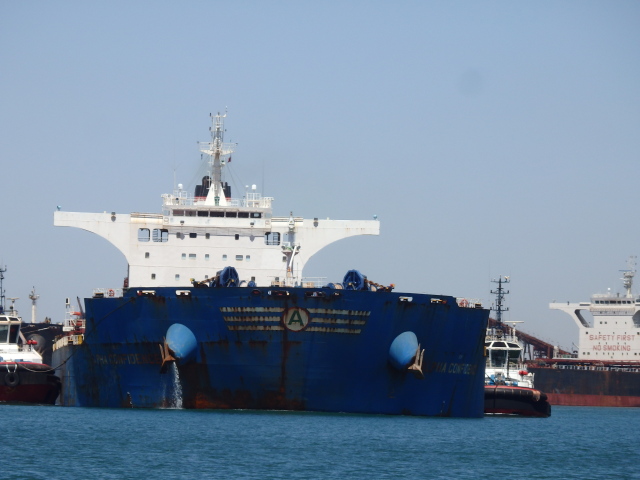
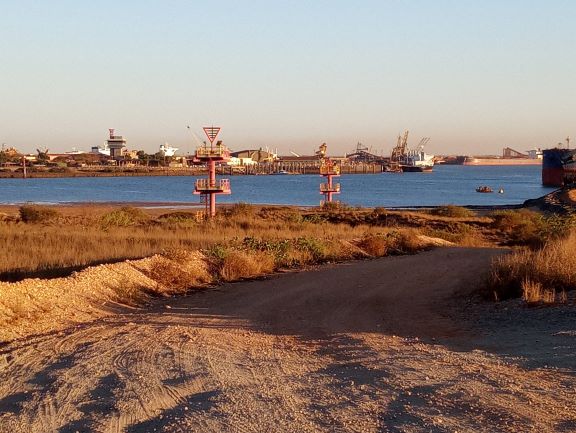
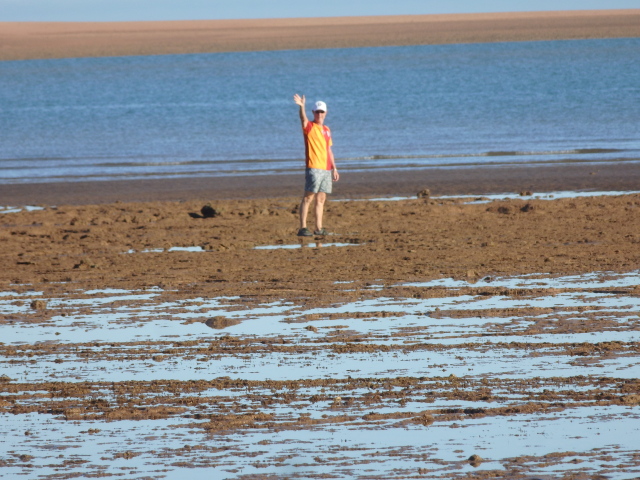
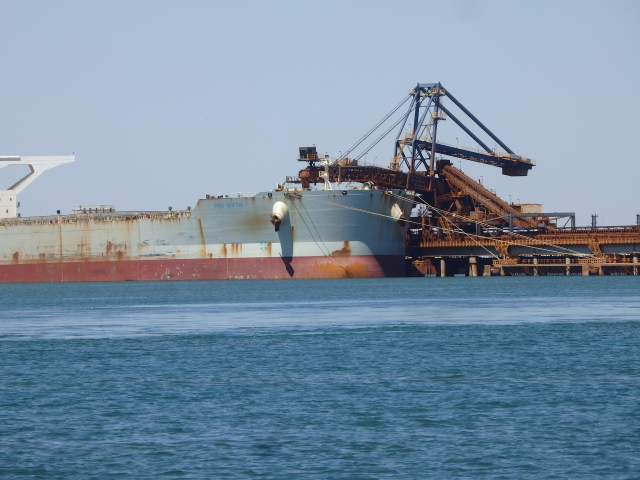
The port has so much growth planned with more berths being built for FMG and Roy Hill that the WA Government is now buying up residential land in the old town because the prevailing winds blow the red iron ore dust over the town. Housing is now further along the coast or over at South Hedland, a planned community 15 kms inland.
The Port Hedland Historical Society museum is housed in the 120 year old Dalgety’s pastoral services office building, and showcased the old Port Hedland, a commercial centre for the sheep industry, now, of course, long gone thanks to dingos and mechanisation.
We watched the “stairway to the moon” from Cooke Point when the full moon slowly appears well after sunset on the horizon and its reflection shows in the receding tide across the mudflats. Because there are such prodigious tides in the north-west all the towns seem to advertise this feature.
By week five, we have moved into a routine of a couple of sights/tours/walks per day or some driving and then relax a lot with plenty of books being consumed. We are headed inland now on the way back to Perth, so the next time we glimpse the Indian Ocean it will be from the Beaconsfield ridge, back at Mardie St.
Next stop after Port Hedland was Karijini National Park, about 3 hours’ drive. Tony was returning after 10 years and as we drove into the Hammersley Ranges a lot of memories flooded back for him of his visit with our UK friends. We had 3 nights booked at the Eco Resort, a glorified camping ground and cafe in the middle of the spinifex and gums. The glamping tents have wooden floors, an en-suite bathroom, a giant and very comfortable kingsize bed, a couple of verandahs and lots of flaps and openings to allegedly allow the breeze the pass through. On both days, the daytime temperature was about 35deg C, although, admittedly, it cooled to 18deg C at night… so, without any cooling, it was quite warm but we appear to have become acclimatised by now so it wasn’t too hard to deal with! The restaurant has some very good meal choices such as crocodile tail curry and roasted roo loin and plenty of quenching libations available.
Karijini is rightfully acknowledged as one of the premier tourist attractions in WA but it’s remoteness and climate means it will never be overrun with visitors (that said, the resort has been fully booked since it reopened after covid restrictions this year). For the adventurous, there is lots to do, as the amazing gorges where the temperature is only in the low 20’s can be explored on foot. But to get down there, you usually have to descend a rock stairway of over 200 steps and sometimes a number of ladders. So, in deference to Sally’s fitness and minimal climbing ability, we just took it easy. We drove to the popular viewing platforms, took some short walks along the top of the gorges and took lots of photos of the beautiful, coloured iron stone and the bizarrely shaped gums. A swim in the most popular pool at Fortescue Falls and a wander into the easiest gorge were admissions that we could take it easy and still enjoy the sights. There were a couple of rough gravel roads to traverse but slowly does it and the car survived unscathed but very dusty! Karajini is well worth the effort to get there. The landscape is massive and majestic and so different to what we see in the South West.
We drove to Tom Price one afternoon for fuel and were a bit gobsmacked by the price – $1.86/litre for Unleaded 95 – the most expensive fuel we have purchased so far this trip! A note to remember is that not all roadhouses/towns have Unleaded 95 or 98 and some towns only have diesel, so it is worth checking with tourist bureaus before you drive and to fill up when you can, just to be on the safe side. We have been very impressed with the 650-700km capability of one tank in our Suzuki XCross Turbo and its excellent performance given it is only 1.5 litre engine size – powering along with no trouble at all at slightly over 110km/hr for hours at a time. Luckily, we encountered only a few caravans and soon got used to passing road trains with four trailers – the new caravans of the desert, along with the etiquette of driving in the bush and making space for very wide loads on a regular basis.
Still in the Pilbara, a couple of hours drive from Karijini, Newman is the site of the biggest iron ore mine in the world, Mt. Whaleback. We planned a couple of nights here as the mine had tours and they were only on in the morning, but after spending a few hours looking around we realised we didn’t need to stay 2 nights. So, some quick googling and a few phone calls and we had the next 4 nights planned, the only negative was another 400km driving day.
Newman is basically a company town. Our hotel was in fact mainly workers accommodation and we got to experience the ‘donga’ life of a FIFO. Our small room was clean and nicely decorated but designed for a large miner, not a couple, as there was no door between the bedroom and bathroom and not much room to move. We ate in the mess hall, albeit with quite a tasty smorgasbord dinner and friendly diners, and we were suitably forewarned about the need to have showers and wear clean clothes, not dirty hi-viz, before entering! The entire town is covered in red dust from Mt. Whaleback with more than 6,500 permanent residents.
The mine tour was an eye-opener; the sheer size of the mine and the sophistication of production and logistics has to be seen to be believed. As well as processing and blending different types of ore from both sides of the mountain there are also other mines nearby supplying ore which is then processed and transported by rail to Port Hedland. Most of the conveyors, crushers and laboratories are controlled remotely from Perth, the 800 workers employed here daily, drive the haul-pack trucks, huge diggers and the trains.
BHP is seeking to have a 50/50 gender split in their workforce and has achieved about 40/60 so far with many women working as truck drivers and operators etc.
After finishing the tour we were treated to a scones, jam and cream morning tea which meant we could get on the road south immediately after. Next stop – Meekatharra.

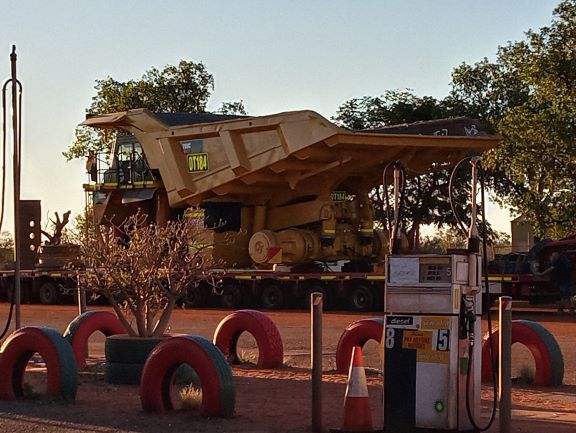


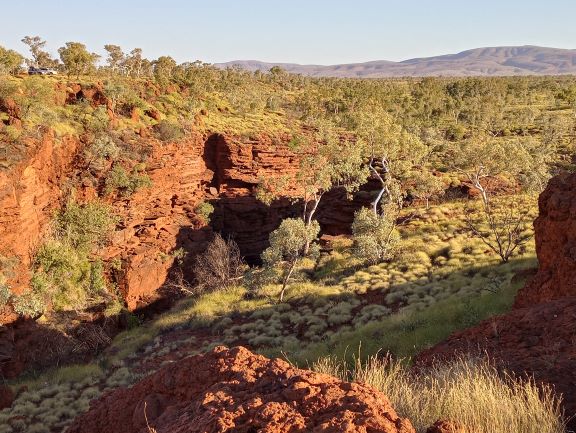
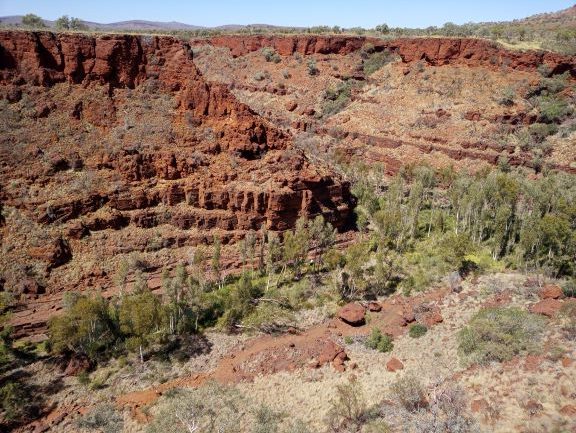
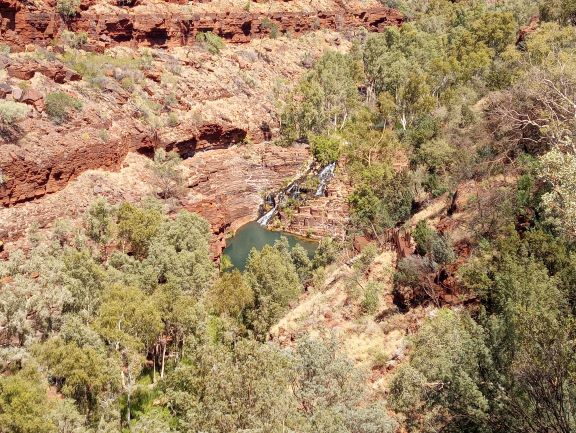
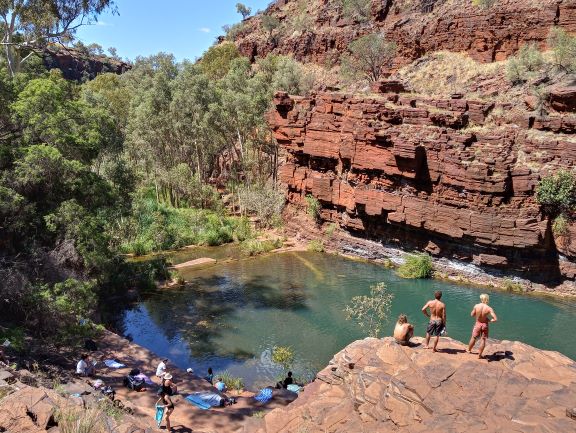
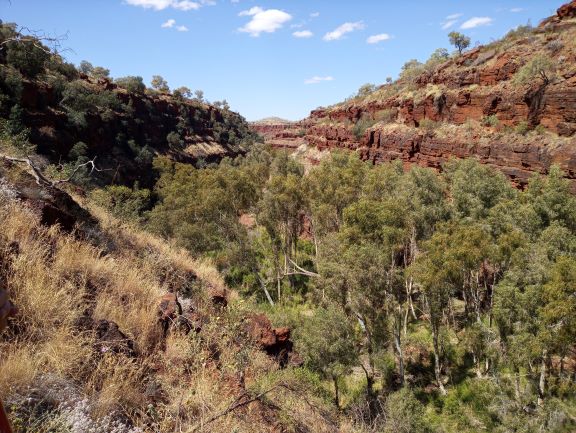
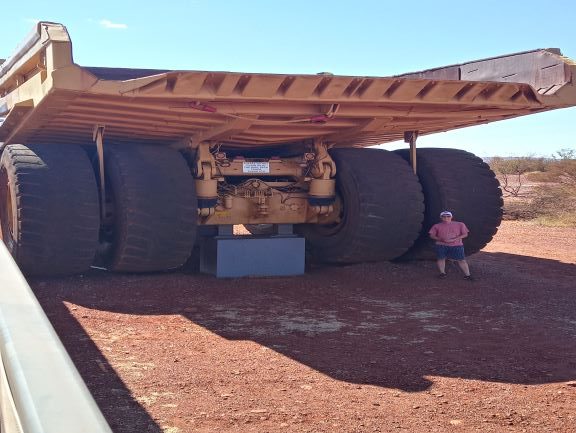

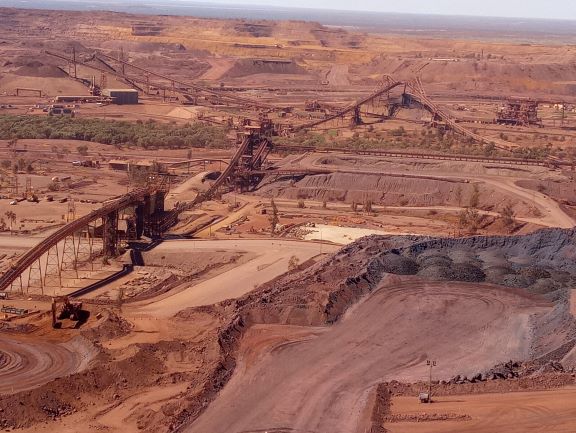
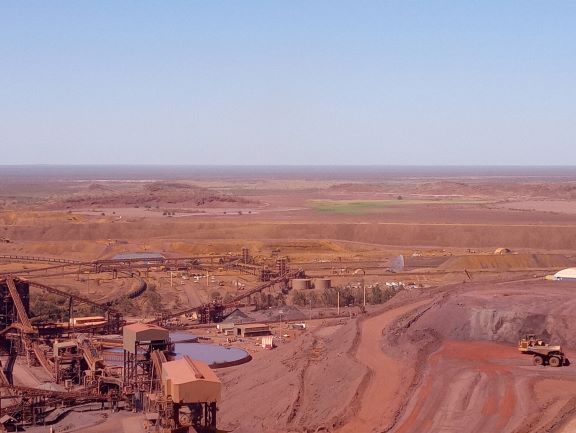
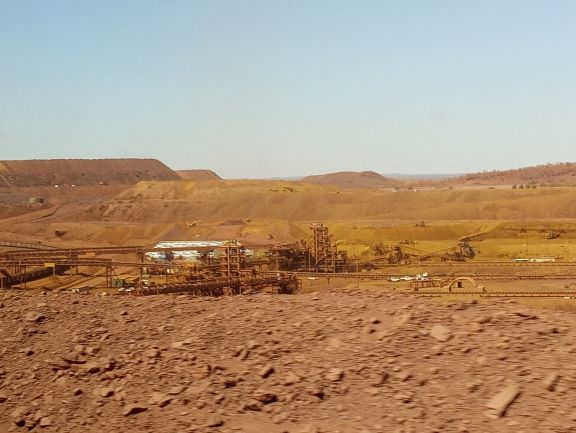
Great Blog. I am passing it on to the rest of the Museum Friday Mob. Glad you are seeing so much of our state. Stay safe.
Thanks Brian!